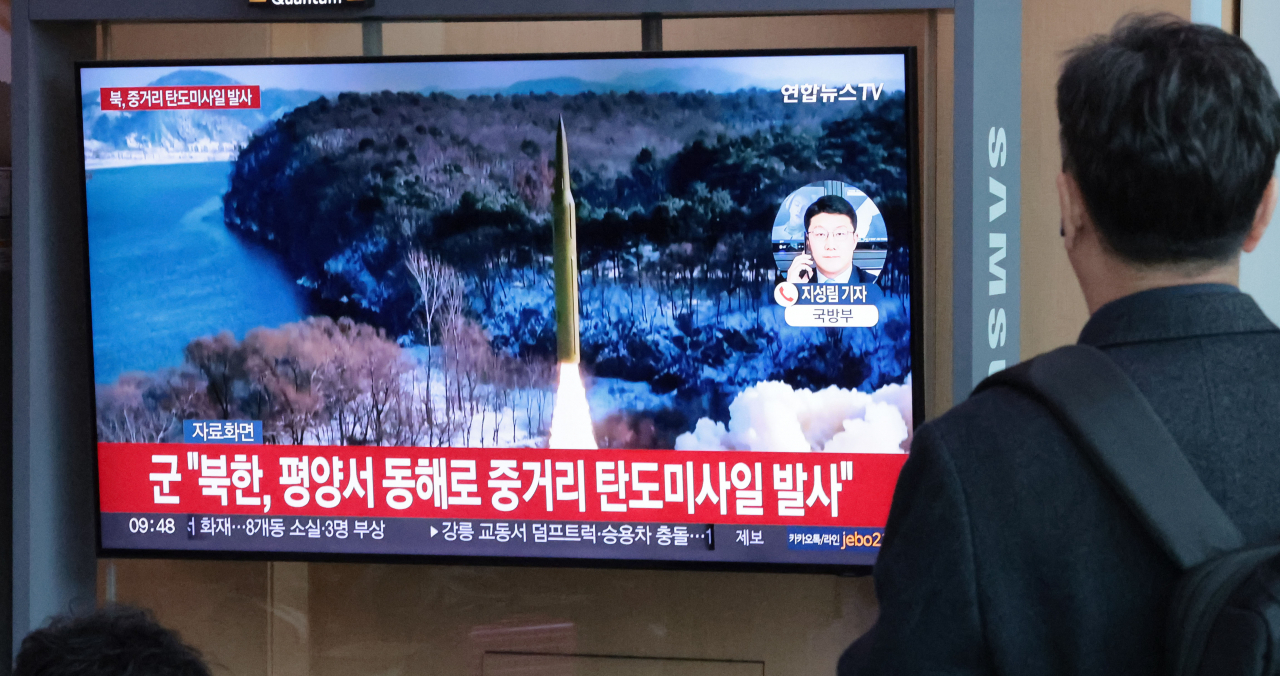 |
People watch a TV news report of North Korea missile firing at a Seoul station on Tuesday morning. (Yonhap) |
North Korea fired an intermediate-range missile into the East Sea on Tuesday morning.
According to South Korea’s Joint Chiefs of Staff, an intermediate-range ballistic missile was launched from the Pyongyang area at around 6:53 a.m. The missile flew for about 600 kilometers before landing in the water.
The missile was detected from the moment of its launch, and the related information was shared with the US and Japan, the JCS said.
The JCS condemned North Korea’s missile firing as a “clear act of provocation that threatens the peace and stability of the Korean Peninsula.”
The last time North Korea fired a missile was on March 18. That was a short-range ballistic missile, which also landed in the waters near the east coast.
Experts in Seoul say North Korea opting for missiles of a shorter range may be a Japan-conscious move.
“The fact that the intermediate-range ballistic missile did not reach Japan’s exclusive economic zone suggests that North Korea is trying to create an atmosphere of dialogue with Japan. In other words, North Korea is trying to get the Kishida regime to the table with them,” Yang Uk, a research fellow at Asan Institute of Policy Studies, told The Korea Herald.
Yang said that North Korea’s intention appears to be to make Japan the “weak link” in the trilateral cooperation between South Korea and the US.
In an interview with The Korea Herald last week, the previous deputy defense chief Shin Beom-chul said that North Korea going for a short-range ballistic missile may be “a way of staging a show of force without offending Japan.”
In the official Korean Central News Agency on March 25, North Korea claimed that Japanese Prime Minister Fumio Kishida offered to meet with its leader Kim Jong-un “at the earliest possible date.” Japan refuted having made such a proposal.
Then a day later on March 26, North Korea said it would refuse all contact with Japan.





![[Herald Interview] How Gopizza got big in India](http://res.heraldm.com/phpwas/restmb_idxmake.php?idx=644&simg=/content/image/2024/11/20/20241120050057_0.jpg)

